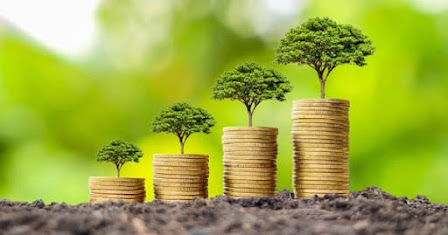Understanding Carbon Footprint: Impact and Ways to Reduce Environmental Impact
We all know that climate change is a serious threat to our
planet and its inhabitants. As such, it's important for us to understand what
we can do to reduce the environmental impact of our activities and lifestyles.
One way we can do this is by understanding carbon footprint - what it means,
how it affects the environment, and ways in which we can reduce our own personal
impacts on the environment.
A carbon footprint measures how much greenhouse gas emissions
are created as a result of human activities or products consumed over a given
period of time – usually one year. Greenhouse gases include carbon dioxide
(CO2), methane (CH4) nitrous oxide (N2O) among others that trap heat in Earth’s
atmosphere leading to global warming. The higher your household’s total annual
emissions from burning fossil fuels like coal or oil for energy use at home;
transportation; heating/cooling buildings; manufacturing goods etc., your
overall carbon footprint will be larger than
someone who has lower levels of these same activities/products used each year.
So why should you care about reducing your own personal
contribution towards climate change? Well firstly because if everyone does
their part then collectively we could make an enormous difference when tackling
this global issue! Secondly, there are many benefits associated with reducing
one individual level of CO2 output: lower utility bills due to more efficient
appliances being used at home, improved air quality due to fewer pollutants
being released into the atmosphere from cars & factories, etc., plus
financial savings too since companies may offer incentives for those using green
technologies!
Now let's look at some practical ways you can start making
changes today:
1) Reduce electricity consumption by switching off lights
& electrical items when not needed; replace old inefficient light bulbs
with LED versions; unplug any chargers left plugged in even if they're not
currently charging anything.
2) Switch up transportation methods- carpooling instead of
driving alone where possible; walking/cycling short distances rather than
taking public transport every time, considering electric vehicles powered by
renewable sources such as solar power, etc.
3) Investigate green energy options - many countries now have
renewable energy tariffs available so check out whether yours offers something
similar! This means you'll be paying extra but also helping contribute towards
cleaner forms production while still receiving reliable supply without
interruption.
4) Make sure recyclable materials get recycled properly-
plastic, bottles, cans, paper, glass, etc. all need sorting correctly before
disposal.
About the Author:
OYU Green provides innovative carbon credit
and carbon trading solutions to businesses looking to offset their carbon
footprint. With a team of experts, the company helps clients identify and
invest in carbon projects that provide both environmental and social benefits.
OYU Green's comprehensive approach to carbon trading ensures that clients meet
their regulatory and sustainability targets while promoting a sustainable
future for all. The company's carbon credit solutions provide an efficient and
cost-effective way for businesses to reduce their carbon emissions and
contribute to the fight against climate change.




Comments
Post a Comment